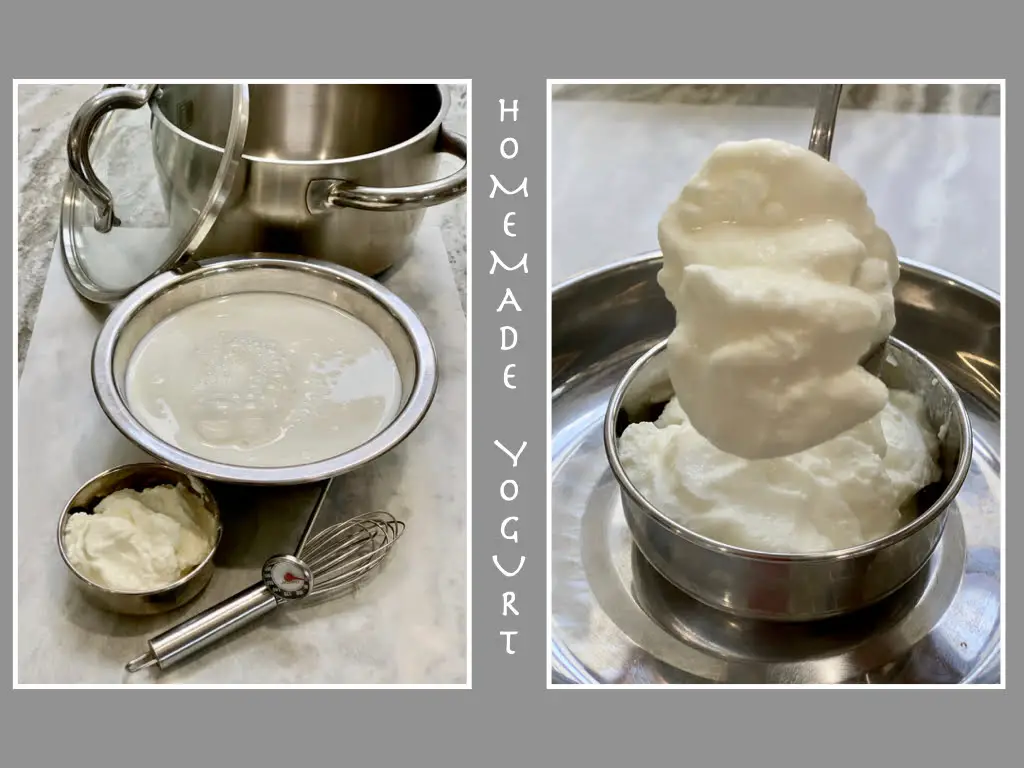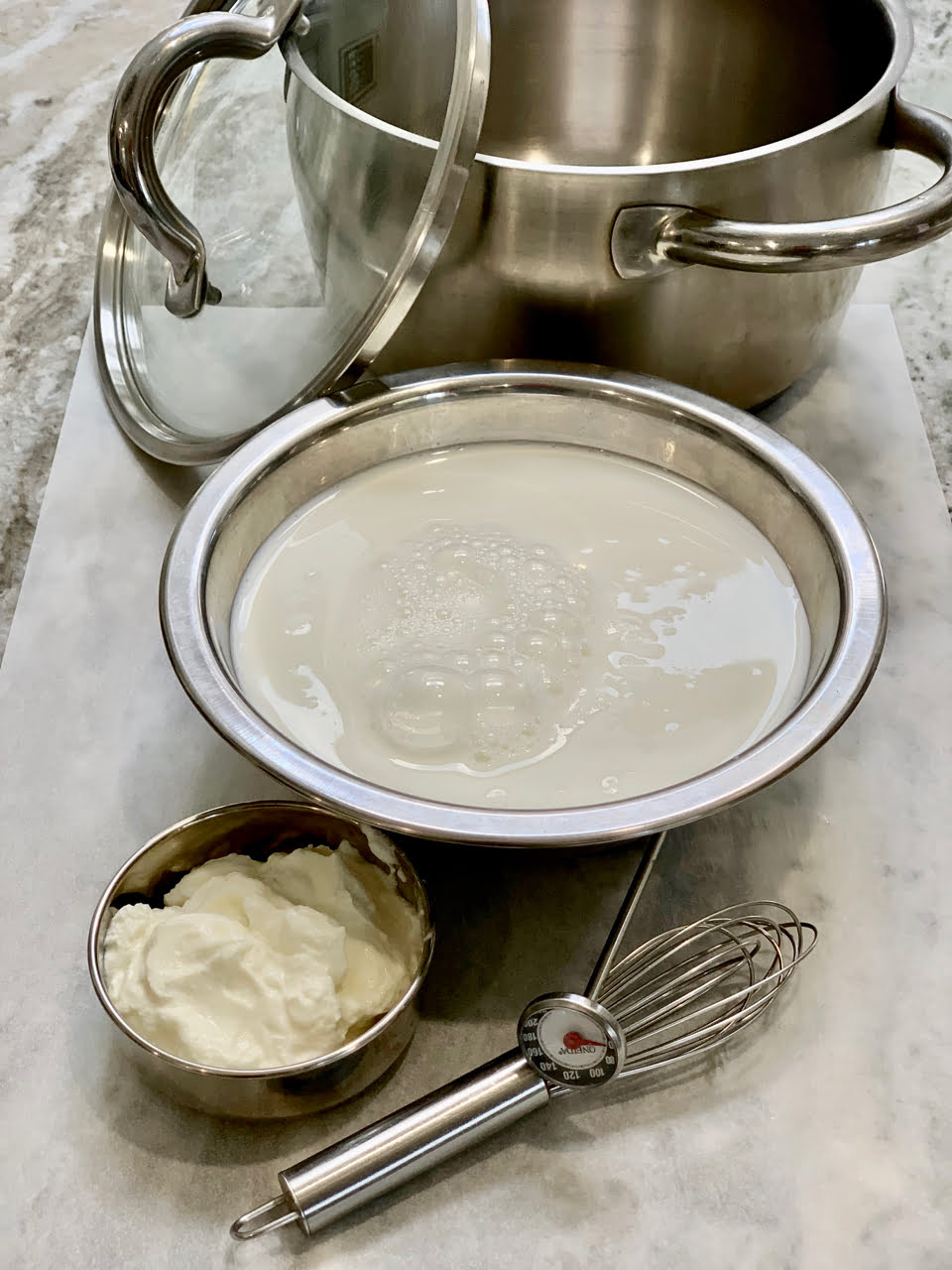Old World Homemade Mediterranean Yogurt, an ancient technique, is simply boiled milk, added starter and a warm blanket wrapped around it for 24-hours.
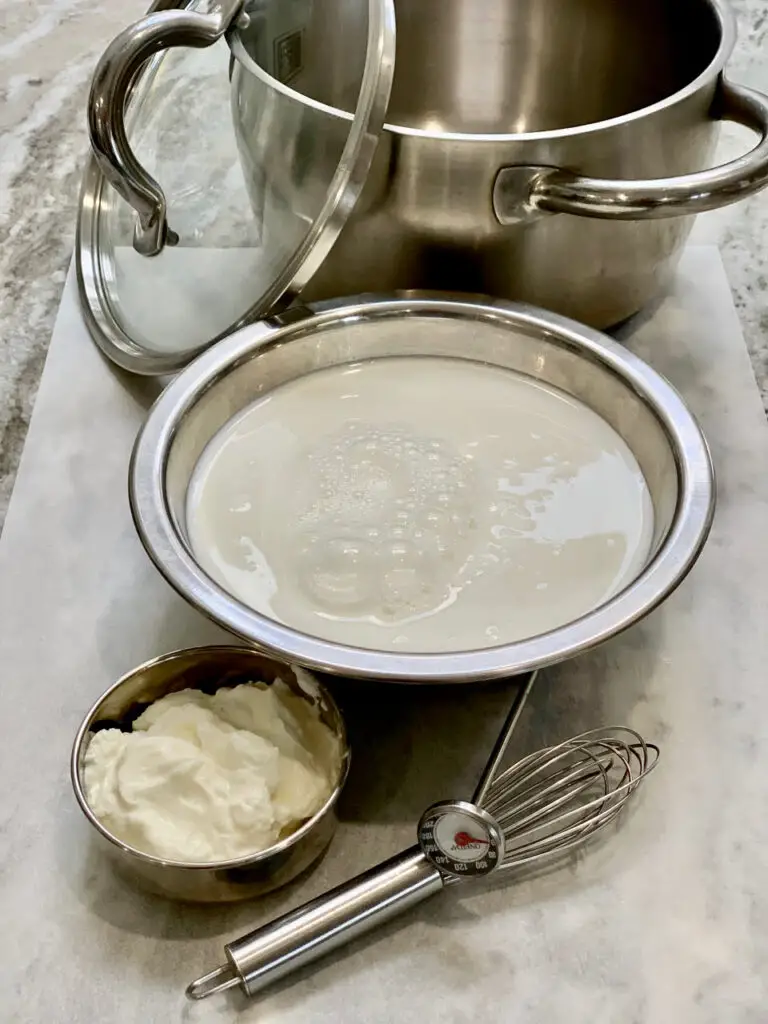
An Old World Technique of cultivating yogurt probiotics naturally, without additives or thickeners!
What is Yogurt?
Yogurt is a creamy, luscious, soothing, milky fermented bacteria that has been around for longer than it has been documented.
And while here in America we know yogurt that is primarily made from cow’s milk, sheep, goat, and camel milk were the first documented yogurt recipes made.
Mediterranean Yogurt
The word Yogurt is actually a Turkish word. I knew yogurt as Laban, or Lebneh, while growing up in a Syrian/American home.
Once or twice a month, a huge pot of warm milk, wrapped in a blanket, would set out on our kitchen counter until morning.
In the morning the pot of milk that had changed its consistency would be unwrapped, careful not to jiggle, as it was moved to the refrigerator to set, gel, and get cold.
That was it. A Yogurt recipe that had been done in this way for generations!
Old World Homemade Yogurt
Yogurt from my childhood was not sugary, not frozen, not a dessert.
Homemade yogurt was, instead, the staple in many savory meals, sauces, soups, cheese and drinks.
It was often eaten alone to aid the body in its immune system by incorporating healthy bacteria into the intestines.
If it was ever served sweet, it was a rare treat for breakfast in which honey, cinnamon and pistachios were added.
Ancient Mediterranean Food Is Always Homemade
From ancient writings, such as the Bible or Quran, yogurt (Labani, labneh, labni), is referred to as a healthful and filling food.
Also taught to be rich in minerals and vitamins providing also, an easily digestible source of calcium.
Yogurt has been used for the treatment of burns and cuts and because of its antibiotic properties, it has been widely embraced dietetically for stomach ulcers.
What a delicious way to stay healthy!
Ways To Enjoy Yogurt
While yogurt, in our current times, is most often a breakfast meal or an ingredient in a Healthy Smoothie, in Mediterranean cooking yogurt was always served with meats to aid in digestion.
A favored yogurt dish served alongside a savory meal is one with cucumbers, mint or other fresh herbs and served as a salad or side dish, known as Tzatziki.
As a refreshing summertime appetizer or light meal, Cold Cucumber Yogurt Soup is great for cooling off the body on a hot day.
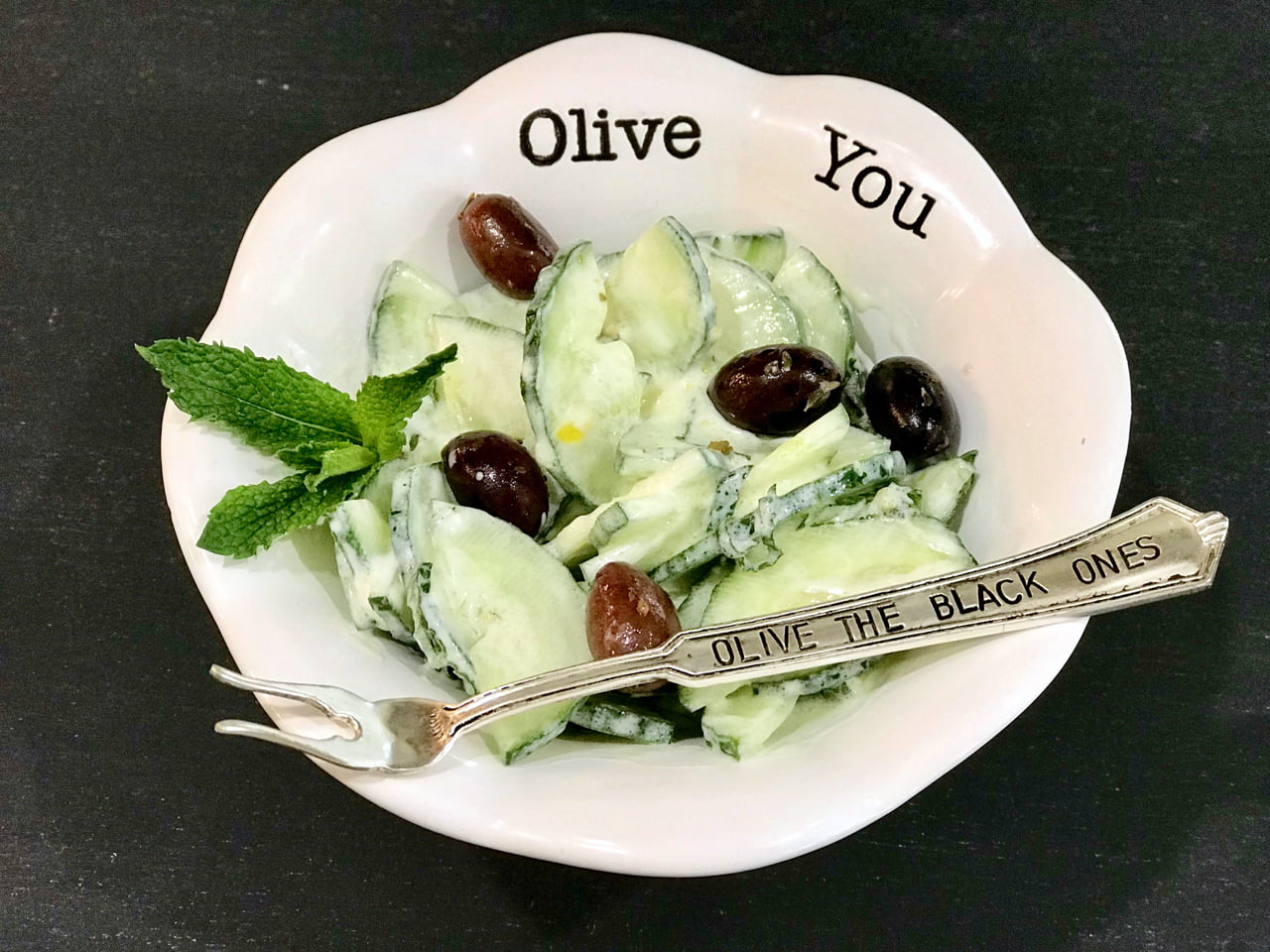
I often use yogurt in the making of my summer popsicles, such as my favorite Blueberry and yogurt popsicle.
Other times, I swap out milk for yogurt in many of my cakes (Sage and Lemon Tea Cake), and muffin recipes.
A favorite Mediterranean savory breakfast or lunch, served with poached eggs, a Turkish dish called Cilbir.
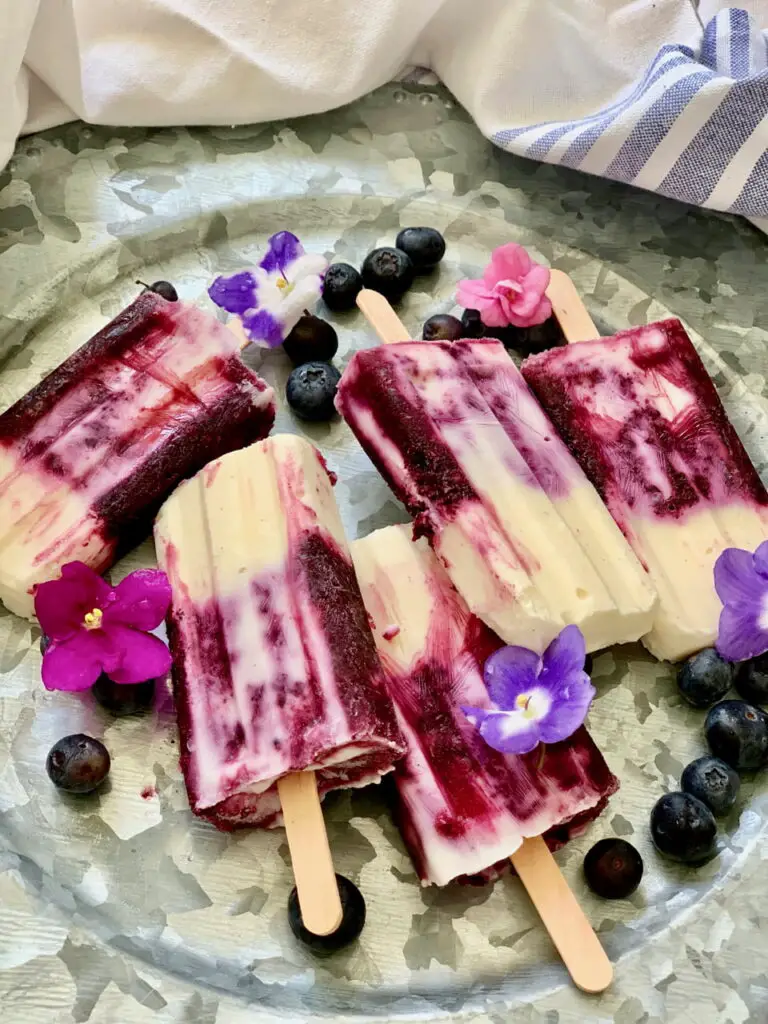

Probiotics In Homemade Yogurt Aids In Digestion
I always thought of yogurt as an important digestive aid when eating meat.
It was thought that the probiotics in the yogurt were exactly what the body needed to process the meat internally.
Meat wasn’t always monitored by government agencies to be free of bacteria.
In the countrysides of Syria, or Nomad life of the desert, meat was slaughtered, roasted and eaten.
Sometimes it was left to hang after it was slaughtered, which tenderized the meat but also increased the risk of bacteria forming in the meat.
Yogurt, with its antibacterial properties, was a good solution to ward off tummy troubles.
Types Of Milk For Yogurt
While I wish I was able to obtain sheep milk where I live here in America, I am grateful to live in an area in which fresh, local cow’s milk is available.
Sheep milk has a higher fat content, which makes for a creamier yogurt as does goat milk.
Oddly enough, both sheep and goat milk is easier to digest and is my preferred milk for homemade yogurt.
Getting Started With ‘Starter’
One very important ingredient is needed to make homemade yogurt; a cup of yogurt from a previous batch. Sound easy? It’s not.
Finding a store bought brand of yogurt with real live active cultures has become something of a challenge. Not so years ago.
Once you have a reliable brand to start your first batch of yogurt, just save a cup for the next batch.
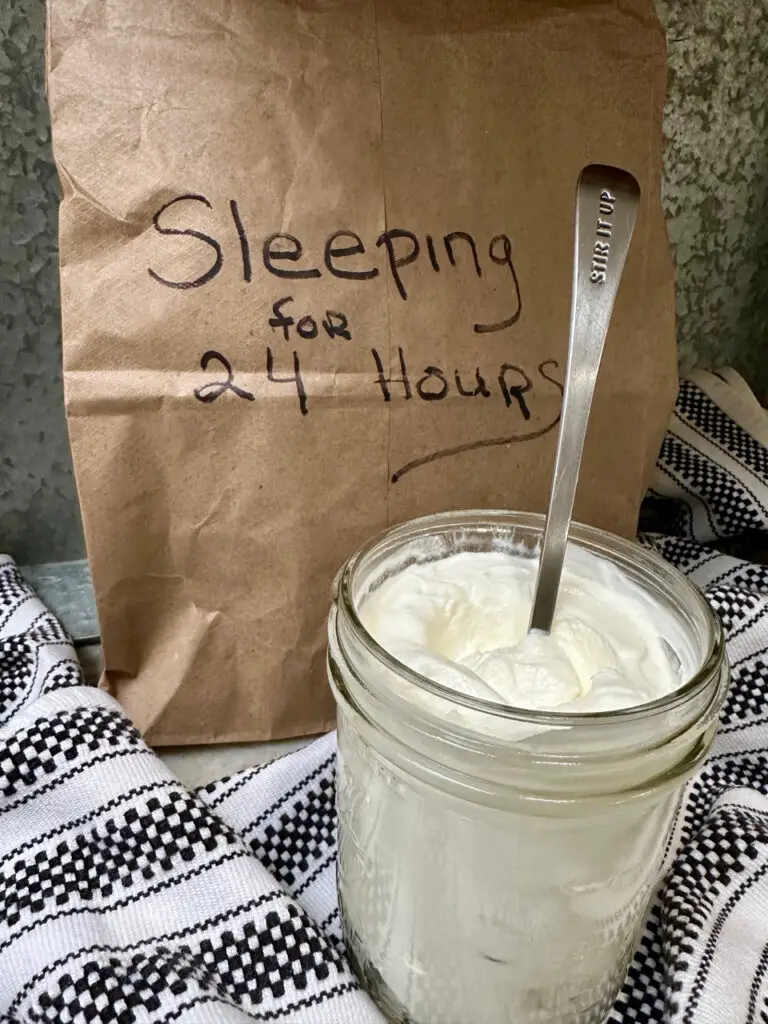
How To Make Homemade Mediterranean Yogurt
Step 1 – Milk is simmered slowly in a large pot on top of the stove until a bubble of foam forms and begins to rise up.
Step 2 – Turn it off and let it sit for a few minutes, then repeat.
Step 3 – Allow the milk to cool until it reaches about 110 degrees.
Step 4 – Stir in the room temperature starter yogurt.
Step 5 – Cover and allow it to sit out overnight.
Step 6 – In the morning, transfer to the refrigerator to chill.
The yogurt is now ready to enjoy.
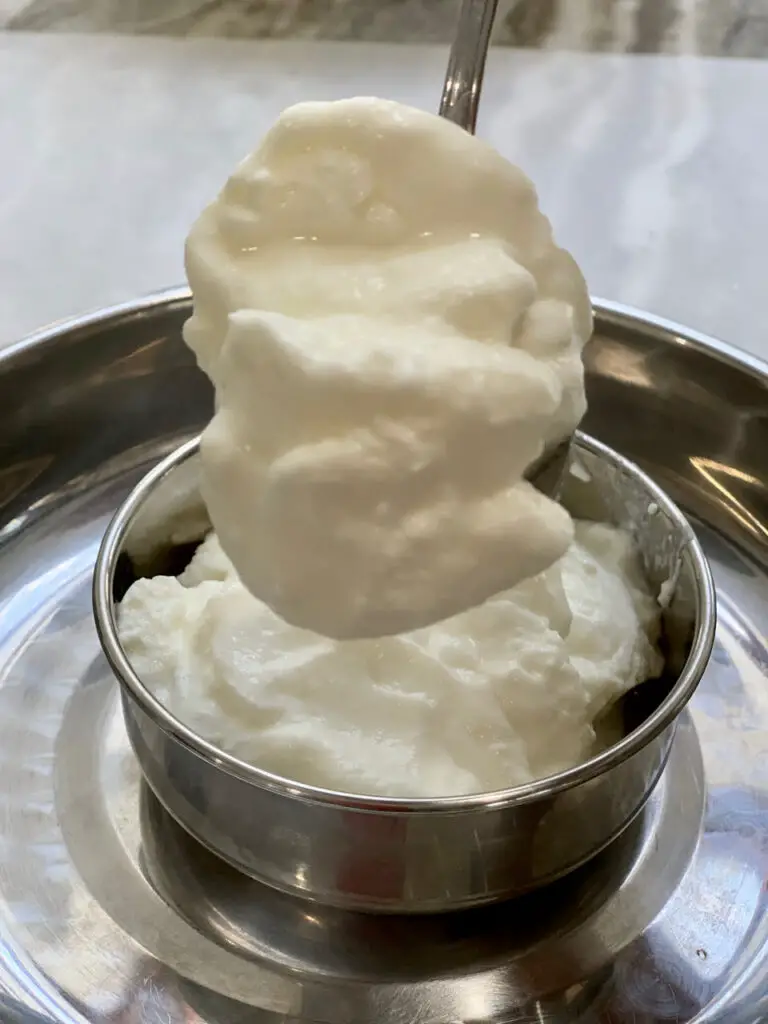
Ingredients Needed
- Milk – whole fat or fat free
- Plain yogurt – a small amount is used as starter
Equipment Needed
- Large pot with a lid
- Whisk
- Large towel – to cover the pot overnight to keep warm
- Stovetop or burner
Old World Homemade Mediterranean Yogurt
Equipment
- Large pot with a lid
- Thermometer
Ingredients
- 1 cup Yogurt starter room temperature plain, full fat yogurt with live culture
- 1 quart Milk full fat
Instructions
- Pour milk into a heavy pot. On medium heat, bring the milk slowly to a low boil. As it begins to boil, a film or skin will begin to rise. Let it rise for a few seconds. Turn the stove off.
- Wait 5 minutes and do it again; slowly bring to a boil, rise, turn off. Wait 5 minutes and do one last time. It’s an old tradition and the only way I have done it; everything in three’s!
- Let the milk cool to the temperature of 110 degrees. Another traditional way of knowing when the temperature is right; stick your finger in, if you can count to 10, the temperature is right. Before, or hotter, it will kill the active cultures in the starter. If it is too cold, the fermentation process will not begin. Old world ways have been tried and true!
- Add your room temperature yogurt starter, whisk well, cover and wrap the pot with a thick towel or blanket to keep the temperature warm. If you have a gas oven, the warmth in the oven from the pilot light (oven off, of course) is perfect for fermenting the milk. Allow it to set over night or at least for 10 hours.
- After the milk has had its warm fermenting time, place it in the fridge for about six hours. Your yogurt is now deliciously, ready to eat!
- Remember to scoop out one-cup of your homemade yogurt to save for the next batch, and just keep it covered in the fridge.
Video
